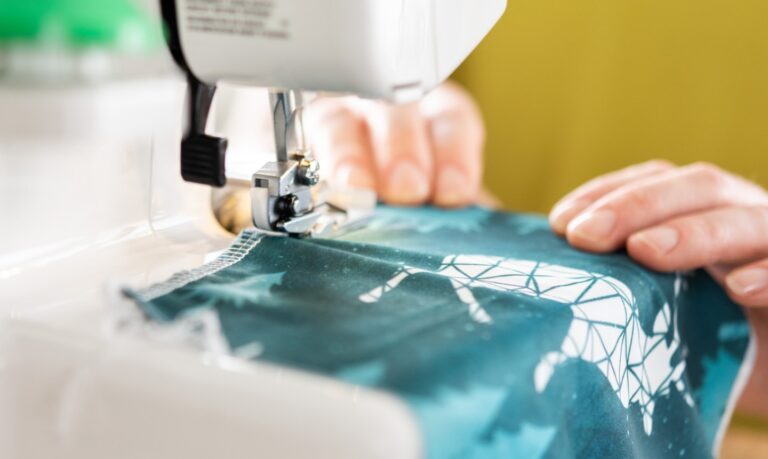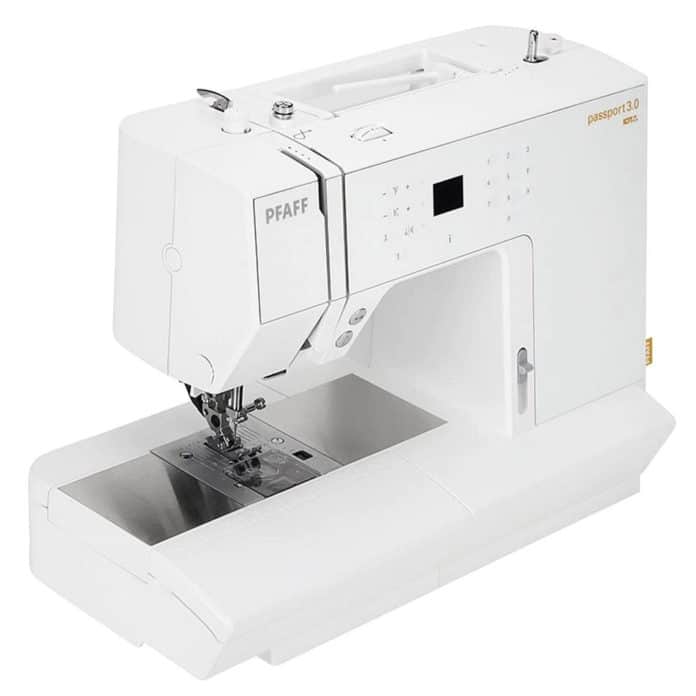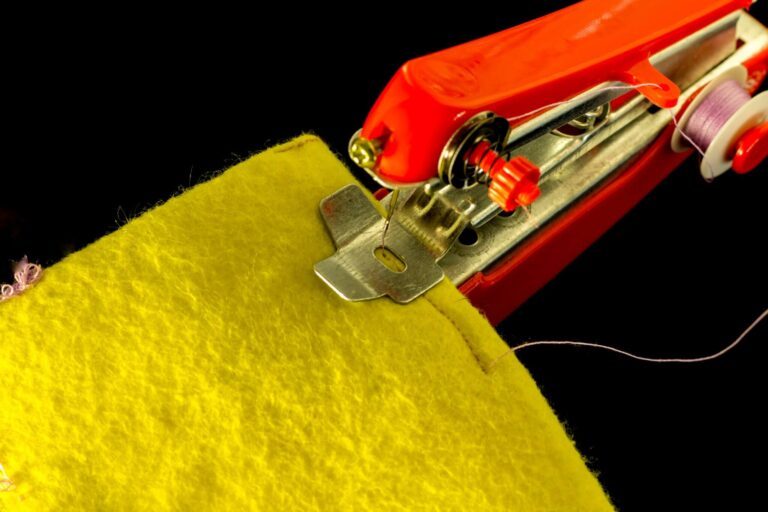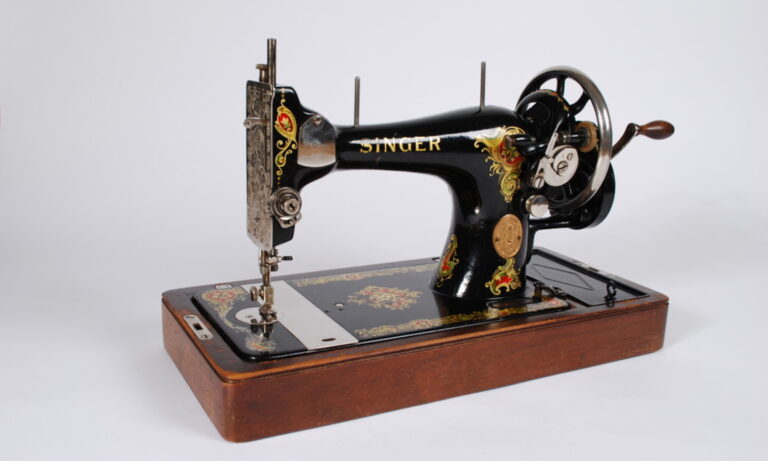How to sew viscose Tips
Viscose is a type of fabric that is made from plant-based fibers and has a soft, smooth texture. It is often used for blouses, dresses, and other garments because of its drape and sheen. Here are some tips for sewing with viscose fabric:
-
Use a sharp needle: Viscose can be a bit slippery, so it’s important to use a sharp needle to ensure that the fabric doesn’t slip out from under the presser foot.
-
Use a smaller stitch length: A shorter stitch length will help keep the fabric from slipping and shifting as you sew.
-
Use a walking foot: A walking foot can help prevent the fabric from stretching or becoming distorted as you sew.
-
Use a press cloth: Viscose can be prone to marking, so it’s a good idea to use a press cloth when pressing the fabric to prevent any scorching or marking.
-
Test your thread: Viscose can be sensitive to certain types of thread, so it’s a good idea to test your thread on a scrap piece of fabric before starting your project.
-
Handle the fabric gently: Viscose can be delicate, so it’s important to handle it gently as you sew to avoid tearing or snagging the fabric.
By following these tips, you should be able to sew viscose fabric successfully and create beautiful garments.
Viscose is a fluid fabric reminiscent of silk or satin. It adapts perfectly to many sewing projects. In addition to that, you can easily find very nice models to do yourself and for not very expensive.
It would therefore be a shame to deprive yourself of it, but perhaps you do not dare to start? We therefore explain how to sew and work this material to make your viscose sewing project a success.
What is viscose?
Viscose is also known as artificial silk. It is a light and fluid fabric, very pleasant to wear.
This fiber is semi-synthetic, that is to say, it comes from raw materials of natural origin that have undergone a chemical process. Therefore, if you are looking for an ecological fabric, this is not the one that will meet your expectations.
Its invention dates from the 19th century. Because of its origin, silk was rare and therefore expensive, so two Frenchmen, François Hilaire de Chardonnet and Auguste Delbac, sought to create an artificial silk. They had the idea of using wood pulp, which was then processed. At the beginning of the 20th century, the process was patented by the British.
Viscose is made up of 90% cellulose. Generally, leafy trees, such as beeches or, in the case of softwoods, spruces, are used. Its silky and very shiny aspect is obtained thanks to a treatment with caustic soda.
This material is versatile and can be combined with other fibers. To make bamboo viscose, it is then a question of adding pulp from bamboo.
We distinguish the Lyocell which is a new generation of viscose and which offers more ecological solutions than its predecessor.
Properties and maintenance of viscose
Viscose being a synthetic fabric of natural origin, it benefits from the properties of both categories.
We therefore benefit from a breathable fabric with high absorbency. However, it creases easily. It is a fabric that is not elastic and does not felt over time.
Thanks to its manufacturing process, the fabric obtained is of great regularity, superior to that of cotton, for example. It is easy to dye, but also to print.
Washing: To wash viscose, you can opt for a passage in the washing machine by choosing the delicate laundry program. A low temperature of 30 or 40° C should be preferred. If you select a low spin speed, you will avoid the appearance of creases.
Ironing: As it is a fragile fabric, you must be careful when ironing. It is better to choose a medium low temperature to iron it and have a trial run beforehand. A damp cloth can also be used to protect the fabric.
Choose a project suitable for this fabric
When you are new to viscose sewing, it is best to choose a fairly simple project.
It is therefore better to avoid opting for the pattern of a complex dress. Set it aside for when you’ve had enough practice.
First, why not choose a rather simple skirt or a tank top. It will be more motivating to make your hand and less risky.
When choosing what you are going to create, avoid models with a buttonhole. As this fabric stretches easily, the weight of the buttons may deform it. If, despite everything, you opt for a model of this type, cut in line and choose the lightest possible buttons.
The material needed to sew viscose
To be able to sew viscose perfectly, it is necessary to equip yourself with the right material. In fact, you will need:
Fine pins. Otherwise, you risk making holes in your fabric. As soon as a pin is blunt, eliminate it so as not to risk making marks by using it.
A needle suitable for this type of fabric. We will choose it according to the thickness of the fabric as well, but it must be of type 65/9 or 70/10 at most.
You can optionally opt for a cutting board and a cutter. In this way, the cutting of the different elements will be greatly facilitated.
Depending on your project, it may be necessary to heat seal certain elements. It is then necessary to choose a fusible enough thin to keep the fall of the fabric.
Finally, we will use starch to stiffen the fabric and thus simplify all the work. You can buy ready-to-use spray or prepare it yourself.
Preparing the viscose for sewing
sewing viscose
You have all your materials, you have chosen your project, etc., it is now time to prepare your fabric.
Washing the viscose: For this, as always, you must start by washing the fabric, following the care instructions. This avoids the inconvenience of fabric shrinkage. It would be a shame if the garment you worked on for a long time no longer fit you from the first wash. Then, let it dry preferably in the open air.
Starching viscose: Once your fabric is dry, it’s time to starch it to give it more hold and simplify your work. To do this, lay your fabric flat and spray the starch on it. Wait until it is dry. This process can be accelerated by ironing the fabric.
How to sew viscose
The last step before adding a new garment to your wardrobe is finally here!
It’s time to move on to cutting the different elements. Be sure to use enough needles so that the fabric does not move. Once an element has been cut, it is best to roll it up or, possibly, lay it flat. Without it, your parts may warp. This advice is also valid throughout the seam.
Choose the right stitch length. For sewing, choose a stitch length thin enough that your fabric won’t pucker. Be sure to carry out a test beforehand, on a scrap of fabric, to check that the tension of the thread, as well as the length of the stitch are adapted to it.
Go slowly. When sewing this fabric, be especially careful not to pull on the seam to speed up the passage under the needle. Take your time and let the machine feed the fabric.
Finishes. This type of fabric tends to fray, it may be necessary to serger it if you have a serger or, possibly, to make an English seam. It is also possible to use the rolled hem finish to avoid the risk of weighing down a hem.
To make a hem. Before making a hem, it is best to hang your creation for the previous 24 hours. This will prevent you from ending up with a totally uneven hemline. Then, fold your creation to store it.






